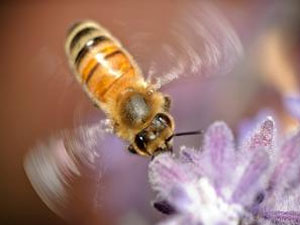《自然》刊出中科院大连化物所论文 — CO的低温催化氧化
时间:2009-04-09 阅读: 我要评论:
4月9日的《自然》刊出中科院大连化物所论文 — CO的低温催化氧化。本站对此表示热烈祝贺,现列出其作者及摘要。
Letter
Nature 458, 746-749 (9 April 2009) | doi:10.1038/nature07877; Received 9 December 2007; Accepted 16 February 2009
Low-temperature oxidation of CO catalysed by Co3O4 nanorods
- State Key Laboratory of Catalysis, Dalian Institute of Chemical Physics, Chinese Academy of Sciences, Dalian 116023, China
- Shenyang National Laboratory for Materials Science, Institute of Metal Research, Chinese Academy of Sciences, Shenyang 110016, China
- Department of Applied Chemistry, Graduate School of Urban Environmental Sciences, Tokyo Metropolitan University, 1-1 Minami-osawa, Hachioji 192-0397, Tokyo, Japan
- Japan Science and Technology Agency, CREST, 4-1-8 Hon-Cho, Kawaguchi 332-0012, Saitama, Japan
- These authors contributed equally to this work.
Correspondence to: Wenjie Shen1 Correspondence and requests for materials should be addressed to W.S. (Email: shen98@dicp.ac.cn).
Abstract
Low-temperature oxidation of CO, perhaps the most extensively studied reaction in the history of heterogeneous catalysis, is becoming increasingly important in the context of cleaning air and lowering automotive emissions1, 2. Hopcalite catalysts (mixtures of manganese and copper oxides) were originally developed for purifying air in submarines, but they are not especially active at ambient temperatures and are also deactivated by the presence of moisture3, 4. Noble metal catalysts, on the other hand, are water tolerant but usually require temperatures above 100 °C for efficient operation5, 6. Gold exhibits high activity at low temperatures and superior stability under moisture, but only when deposited in nanoparticulate form on base transition-metal oxides7, 8, 9. The development of active and stable catalysts without noble metals for low-temperature CO oxidation under an ambient atmosphere remains a significant challenge. Here we report that tricobalt tetraoxide nanorods not only catalyse CO oxidation at temperatures as low as –77 °C but also remain stable in a moist stream of normal feed gas. High-resolution transmission electron microscopy demonstrates that the Co3O4 nanorods predominantly expose their {110} planes, favouring the presence of active Co3+ species at the surface. Kinetic analyses reveal that the turnover frequency associated with individual Co3+ sites on the nanorods is similar to that of the conventional nanoparticles of this material, indicating that the significantly higher reaction rate that we have obtained with a nanorod morphology is probably due to the surface richness of active Co3+ sites. These results show the importance of morphology control in the preparation of base transition-metal oxides as highly efficient oxidation catalysts.
| 美国科研人员在油气废水中发现新污染物 |
| 《ES&T》:中科院发现当前海洋POPs主要污染来源 |
| PLOSOne:中国科学家发现新型超富硒植物—壶瓶碎米荠 |
| 英国科学家研制出首款可用尿液充电手机 |
| 氧化石墨烯具有去除放射性污染的巨大潜力 |
| 《Environmental Health Perspectives》:养猪场恶臭为致病“元凶” |
特别声明:本文转载仅仅是出于传播信息的需要,版权归原作者所有,并不意味着代表本网站观点或证实其内容的真实性; 如其他媒体、网站或个人从本网站转载使用,须保留本网站注明的“来源”,并自负版权等法律责任; 作者如果不希望被转载或者联系转载稿费等事宜,请与我们接洽:service#environmentor.cn(请将#改为@)。
来源: 作者: (环境人 Environmentor.Cn)





